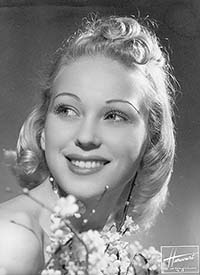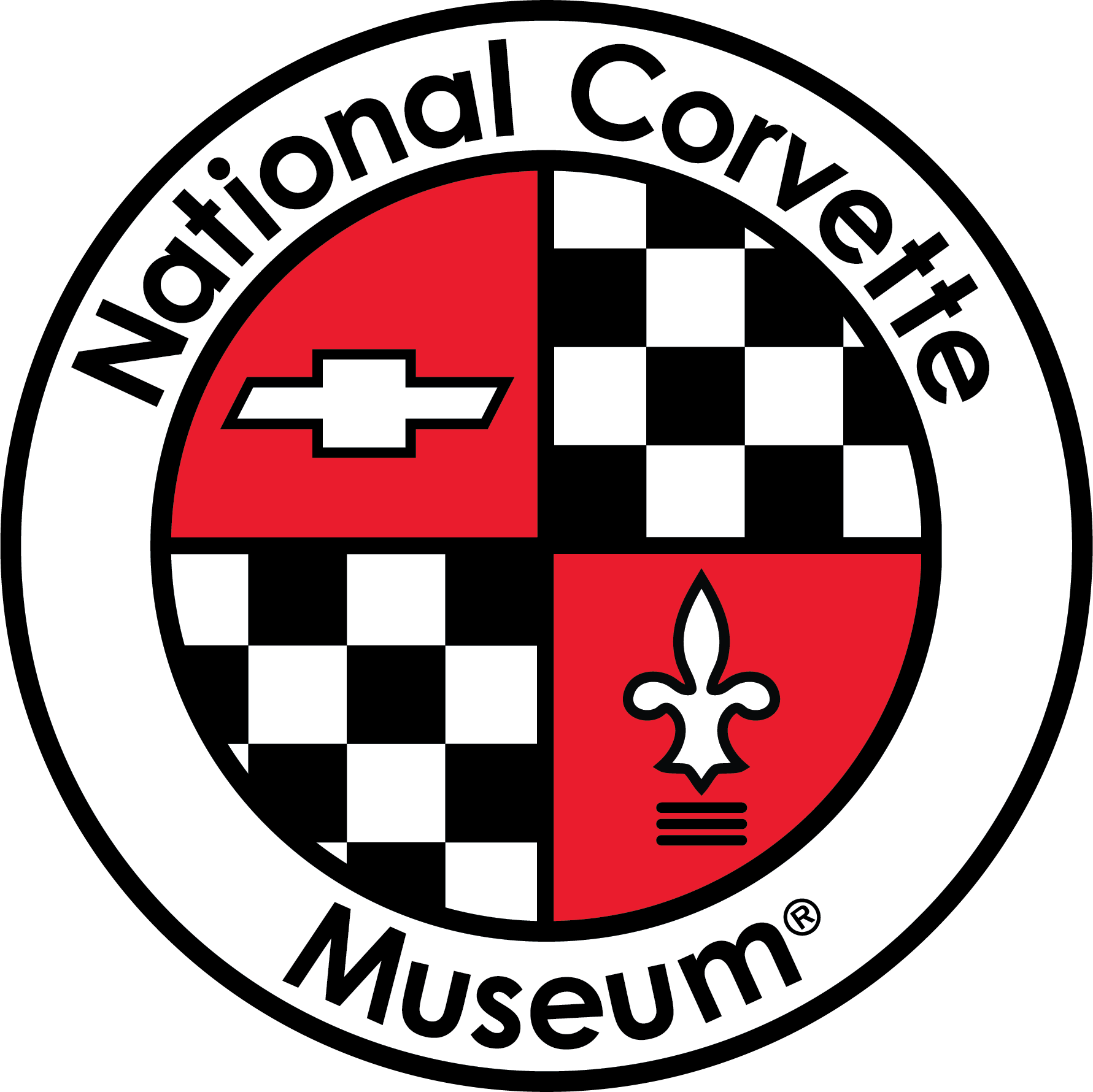2022 Induction
Enthusiast Category
April 25, 1915 – October 23, 2008
If Zora Arkus-Duntov is the godfather of the Corvette, Elfi-Arkus Duntov is its first lady. With her blonde hair and sparkling blue eyes, Elfi helped personify the car in her own inimitable way. But Elfi was much more than Zora’s other half. She had her own claim to fame as a professional model in Berlin and as a dancer with the Follies Bergère in Paris, the Copacabana in Miami and on Broadway in New York. She even learned to fly an airplane long before Zora did.
A native of Berlin, Elfi came from an artistic family. She specialized in ballet. Elfi met Zora as a teenager in Berlin, lured by the warm glow of a Berlin café after ducking out of the rain on her way to meet a date with another guy. As fate would have it, Zora was inside with a few friends of his when their eyes first met. Captivated by each other, they instantly fell in love.
Almost inseparable, they began running around Berlin together in Zora’s Bugatti Type 30. The German city had something for everyone – the arts, theaters, and concerts. They enjoyed nightclubs, cabaret shows and summer days boating around nearby lakes. She’d spell out “Zora” in Russian with bandages on her body and then tan in the sun to brand herself as his girl.
Elfi remained Zora’s girl for life. After moving to Paris because of Nazi harassment, she got a job with the Follies Bergère while Zora partnered with a wealthy friend of his to race MG’s.
They married outside of Paris in February 1939 under the gathering storm clouds of World War II. After Zora joined the French Air Force, he was assigned to bombardier training in the city of Toulouse in the Bordeaux region of southwestern France, leaving Elfi behind in their Paris apartment. The Follies had closed in Paris on the day of general mobilization.
Elfi knew the Germans were advancing on Paris and spent days frantically trying to obtain an exit visa and other the necessary paperwork to get past both Allied and German checkpoints. She’d have to make do with a stateless passport issued after the marriage, since she had given up her German citizenship when she married Zora.
When the German tanks began rolling down the streets of Paris, she knew she had no choice but to leave immediately.
So, she grabbed everything she could, including treasured photographs and other memorabilia, jumped into her prized MG roadster, and got out of town. But the journey would be extremely dangerous. Without papers and very little money for gas or food , she had to trust in the kindness of strangers.
Instead of contending with traffic and checkpoints on the main roads, she chose the back ones where she could make better time. She saw a plane go down in the distance with the sickening sight of black smoke and flames. She didn’t know whether it was German or French.
The first night she spent the night with a French soldier who offered her shelter in an old peasant’s house which had a fireplace. Since she was so exhausted, she agreed to sleep with him on the only bed in the house. He fed her strawberries the next morning and sent her on her way.
Several days into the trip, her MG broke down and wouldn’t start, despite several gallons of gas in the tank. After pushing the car to the point of exhaustion as the sun was going down, she heard a group of soldiers in the distance singing in English. It was a contingent of Scottish soldiers. Seeing a beautiful young woman in their midst, they eagerly took her back to their quarters, put her up in a peasant’s house and fed her a warm breakfast the next morning. They even fixed her MG and filled it up with gas.
After four harrowing days she reached Toulouse, where she was reunited with Zora. Together, they engineered a harrowing escape from Nazi-occupied France, hiding out in a Marseille brothel before finding their way to a New York-bound refugee ship out of Lisbon in December 1940. Landing at Ellis Island, they blended in the west side Russian-Jewish community that gave us the likes of Irving Belin and Leonard Bernstein. After the United States entered the war, they struck it rich in the war munitions business and enjoyed a Penthouse view from their Riverside Drive apartment.
After the war, Zora converted his war munitions business into ARDUN Mechanical (a blend of his father and stepfather’s surnames) and began manufacturing bolt-on overhead valve cylinder heads for the Ford Flathead V8. After that business eventually failed, Zora and Elfi split up for a time. He moved to London to work for Sydney Allard’s sports car firm while she moved to Miami and joined the June Taylor Dancers, performing at the Copacabana. They eventually reunited in New York where Zora first laid eyes on a Corvette at the GM Motorama Show in January 1953.
Zora pulled out the stops to get a job at GM so he could influence the future direction of Corvette. Elfi was at his side for all of it – Pikes Peak, Daytona, Sebring, Nassau, Indianapolis and Le Mans. For decades, the two personified the performance and the sexiness of the Corvette.
Once established in Detroit, Zora bought a wooden-hulled Chris Craft boat and had twin Chevy big-block V8s installed. They used it to cruise around Lake St. Clair on summer days and often entertained the likes of Alan Shepard, Betty Skelton, Jim Rathmann and others.
Even well into their years, the pair had an energy and spark that infected everyone around them. Their proudest moment was August 1994 when they were the guests of honor at the grand opening of the National Corvette Museum.
Zora died of complications from cancer in April 1996 and Elfi would follow in 2008. She was indispensable in getting Zora’s whole life story published into his official biography, Zora Arkus-Duntov, the Legend Behind Corvette. Their ashes are interred here at the National Corvette Museum.







